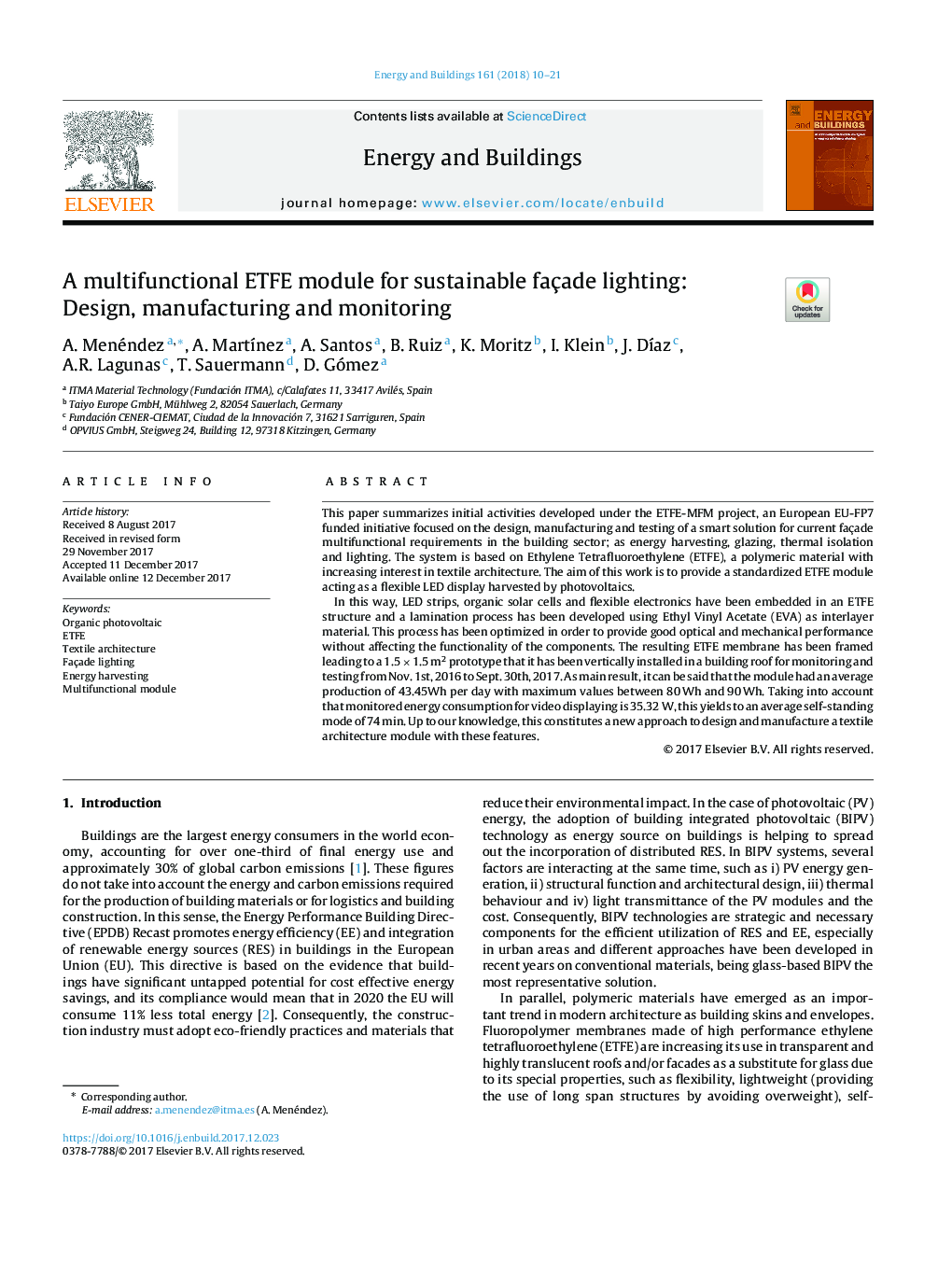| Article ID | Journal | Published Year | Pages | File Type |
|---|---|---|---|---|
| 6728959 | Energy and Buildings | 2018 | 12 Pages |
Abstract
In this way, LED strips, organic solar cells and flexible electronics have been embedded in an ETFE structure and a lamination process has been developed using Ethyl Vinyl Acetate (EVA) as interlayer material. This process has been optimized in order to provide good optical and mechanical performance without affecting the functionality of the components. The resulting ETFE membrane has been framed leading to a 1.5â¯Ãâ¯1.5â¯m2 prototype that it has been vertically installed in a building roof for monitoring and testing from Nov. 1st, 2016 to Sept. 30th, 2017. As main result, it can be said that the module had an average production of 43.45Wh per day with maximum values between 80â¯Wh and 90â¯Wh. Taking into account that monitored energy consumption for video displaying is 35.32â¯W, this yields to an average self-standing mode of 74â¯min. Up to our knowledge, this constitutes a new approach to design and manufacture a textile architecture module with these features.
Related Topics
Physical Sciences and Engineering
Energy
Renewable Energy, Sustainability and the Environment
Authors
A. Menéndez, A. MartÃnez, A. Santos, B. Ruiz, K. Moritz, I. Klein, J. DÃaz, A.R. Lagunas, T. Sauermann, D. Gómez,
